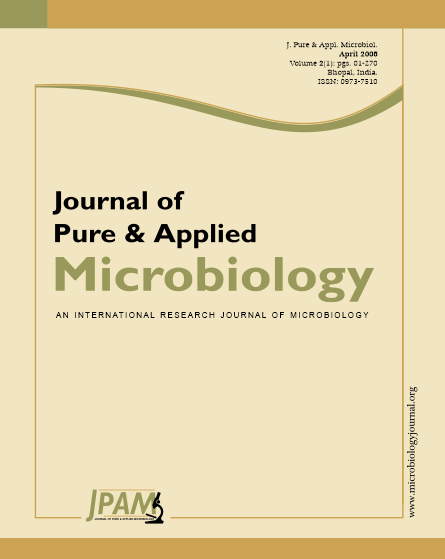Alkalophilic fungi (Acremonium implicatum, Acremonium sp., Acrostalagmus luteo-albus, Beauveria bassiana, Clonostachys rosea, Doratomyces stemonitis, Paecilomyces lilacinus and Volutella ciliata) isolated from forest alkaline soils (pH 9 to 10) of the Eastern plain in Buenos Aires province (Argentina) were grown in solid-state cultures (SSC) and subjected to a screening of alkaline polysaccharides. Specific growth rates (µ) in agar media with different combinations of glucose or sucrose (as carbon and energy sources, CES) and tryptone or peptone (as N-sources) were determined. All fungi showed comparable growth behaviours in the different media demonstrating that they show similar nutritional requirements. These fungi were able to grow in SSC (pH 9.0–9.5) using perlite as inert support impregnate with liquid media containing glucose, pectin or V-8® juice as CES. A. luteo-albus and C. rosea displayed the highest capacity to metabolize pectin as well the greatest pectin lyase activity. Alkaline pectate lyase activity was produced by all fungi (particularly by A. luteo-albus) in almost all media. Alkaline RGase activity was produced by A. implicatum, A. luteo-albus and C. rosea. All fungi showed alkaline cellulase (B. bassiana and particularly A. luteo-albus) and xylanase (Acremonium sp., A. luteo-albus, D. stemonitis and mainly A. implicatum) activities. A. luteo-albus produced the richest enzymatic pool and may be a promising source of alkaline enzymes.
Alkalophilic fungi, Alkaline enzymes, Plant cell-wall degrading enzymes, Acrostalagmus luteo-albus
© The Author(s) 2008. Open Access. This article is distributed under the terms of the Creative Commons Attribution 4.0 International License which permits unrestricted use, sharing, distribution, and reproduction in any medium, provided you give appropriate credit to the original author(s) and the source, provide a link to the Creative Commons license, and indicate if changes were made.


